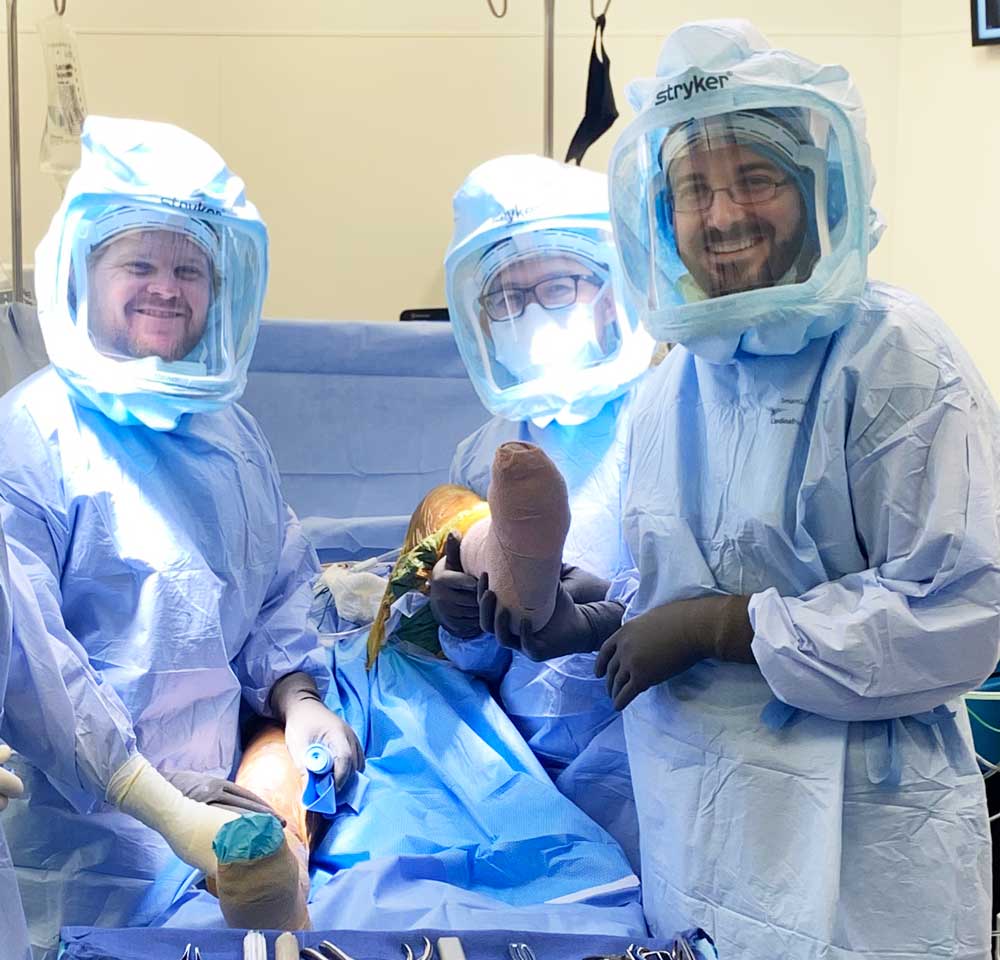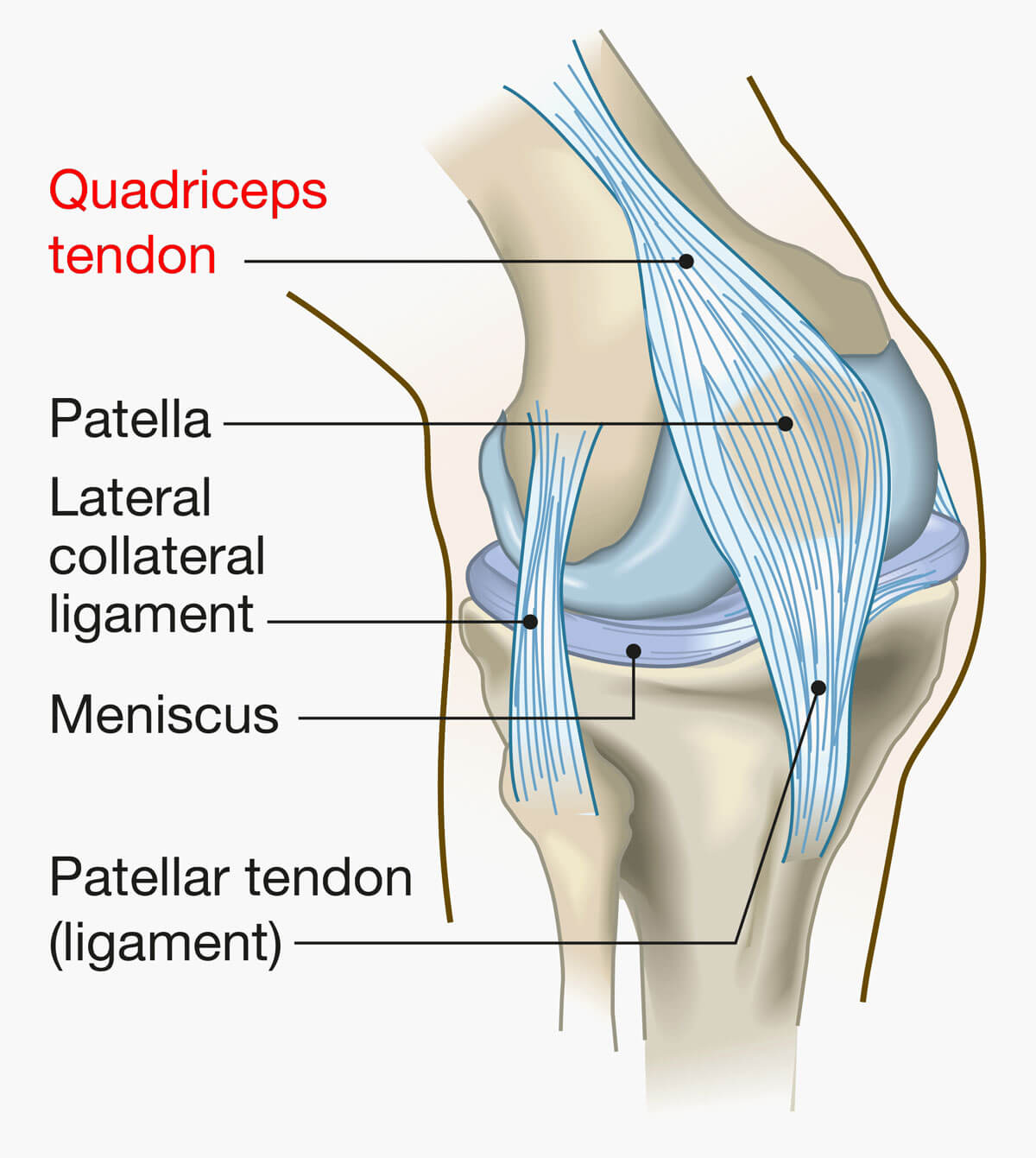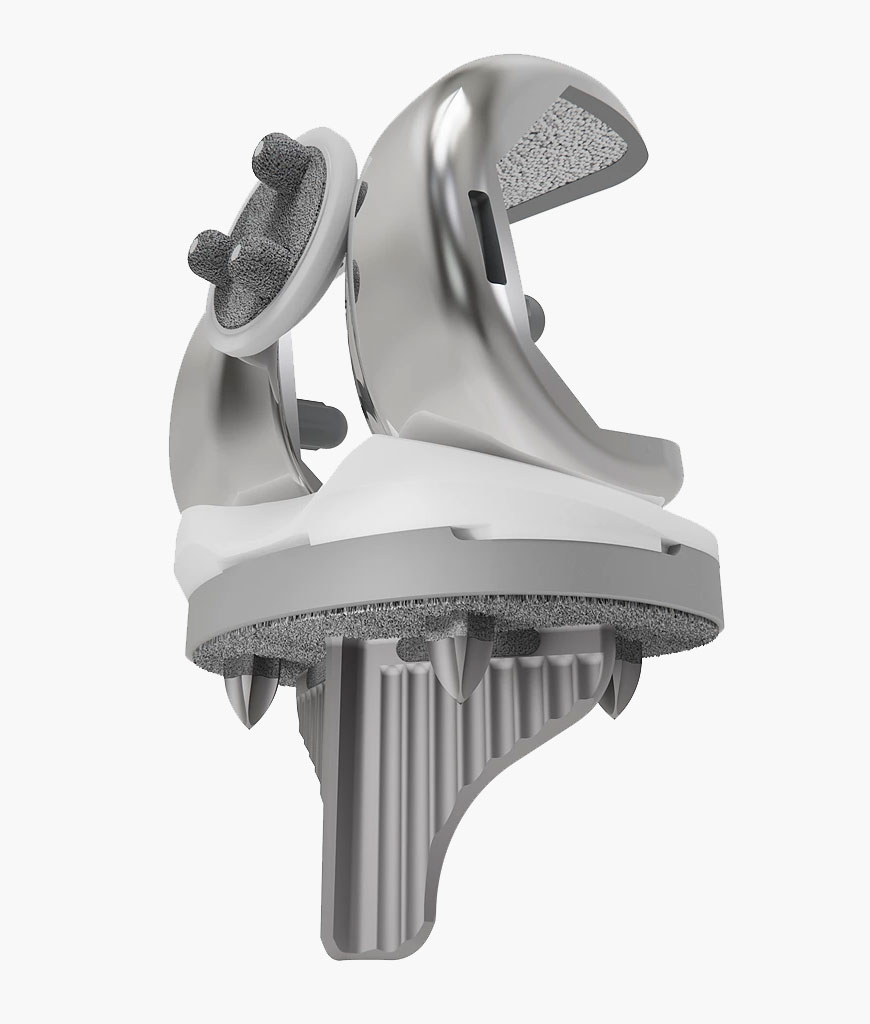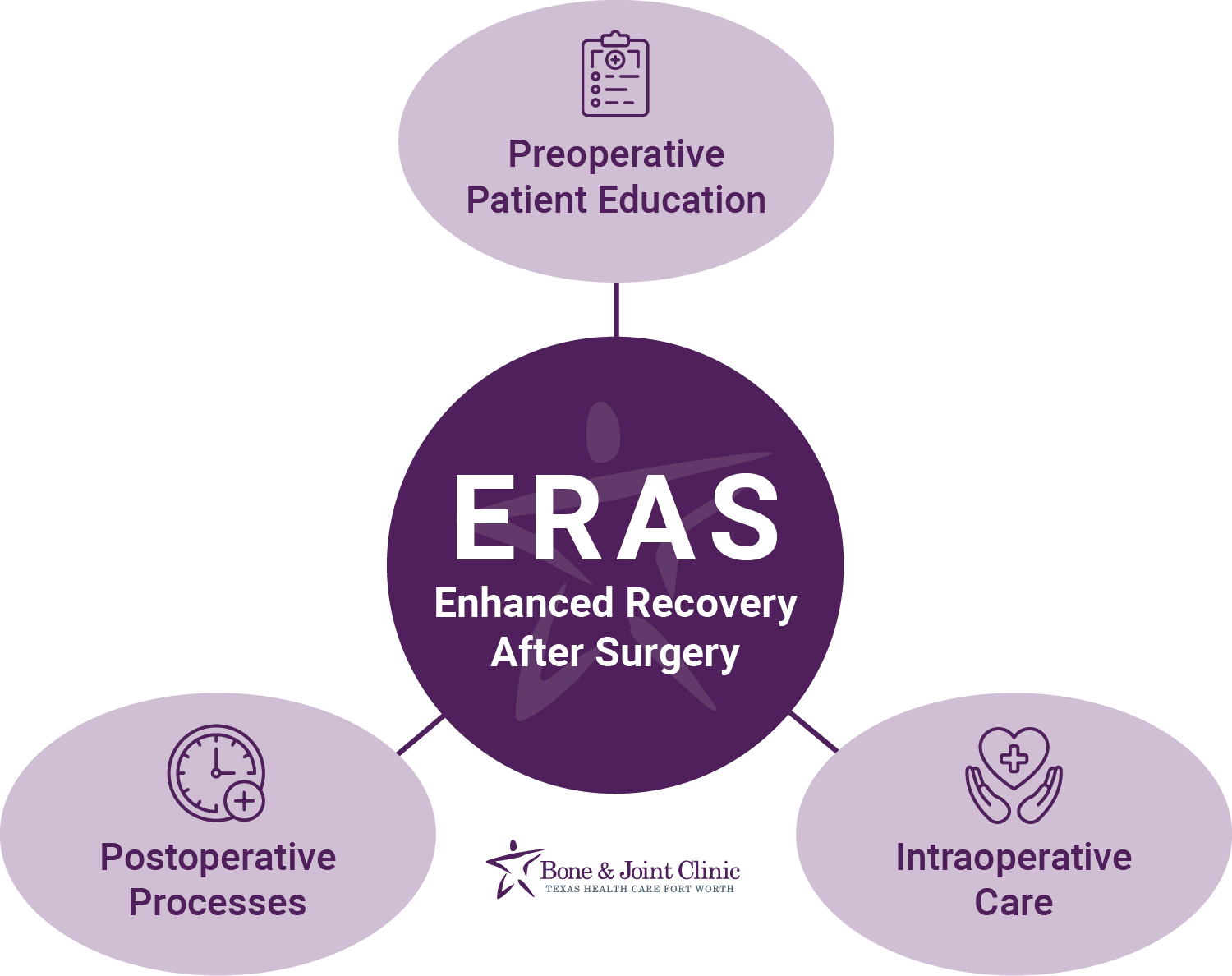Minimally Invasive Knee Replacement
A modern approach to knee replacement
Modern knee replacement surgery has come a long way to improve the quality of life for patients with severe knee arthritis that have failed conservative treatments. Fort Worth Bone and Joint has continually refined our joint replacement surgical techniques for the benefit of our patients including:
- Tourniquet-less surgery
- Quadriceps sparing surgical approach
- Robotic assisted surgical technique
- Cementless implantation
- Rapid recovery protocols
While knee replacement surgery is an invasive option to treat your knee arthritis, it has excellent long term outcomes for a vast majority of patients and modern techniques can minimize the invasiveness of the treatment and facilitate an earlier return to an active lifestyle!

Tourniquet-less Surgery
Knee replacement surgery can be safely completed without using a tourniquet at all. Tourniquets tightly squeeze the thigh cutting off the blood flow to the leg temporarily. Compared to using tourniquets, avoiding thigh tourniquets during knee replacement:
- has the same rate of blood transfusion and overall procedural blood loss
- can facilitate the early return of quadriceps muscle function
- can minimize postoperative thigh pain
- can possibly decrease rates of wound healing complications

Quadriceps Sparing Surgical Approach
Knee replacement surgery can be safely completed without cutting into the quadriceps tendon or the vastus muscles of the thigh by utilizing a minimally invasive Subvastus surgical approach. This is sometimes called a “Jiffy Knee” or “Nano Knee.” Traditional “medial parapatellar” surgical approaches cut into the quadriceps tendon and then suture it back together side-to-side after the surgery. Sparing the quadriceps muscles and tendons during knee replacement:
- can aid in regaining early postoperative active range of motion of the knee
- can potentially decrease early postoperative pain in the first few days after surgery
- has the same overall good long-term outcome of the procedure

Robotic Assisted Surgical Technique
Modern robotics platforms can help your surgeon complete the knee replacement with a higher degree of accuracy and safety. The use of robotic assistance in knee replacement has been shown to:
- improve implant sizing precision to avoid errors in implant sizing
- increase the accuracy of knee implant alignment according to the surgical plan
- objectify the balance of the knee in degrees and millimeters throughout the arc of motion to minimize postoperative knee instability

Cementless Implantation
Modern generation knee implants have 3-dimensional porous titanium surfaces that can bond the implant directly to the bone without the need for cement. The use of modern cementless implants in knee replacement:
- have at least equivalent implant longevity to cemented implants at 10+ years
- have hopes for improved long-term outcomes with durable biologic fixation
- can shorten surgical time without having to wait for the cement to dry and harden

Rapid Recovery Protocols
Many patients are able to go home same day from an ambulatory surgery center or even hospital after knee replacement through a combination of:
- Preoperative patient education for confidence in managing the early recovery at home
- Intraoperative anesthesia and surgery techniques to minimize the invasiveness of the surgery
- Multimodal pain management techniques with nerve blocks, numbing medications injected around the knee, various non-narcotic pain medications, ice cryotherapy, and early participation in physical therapy

